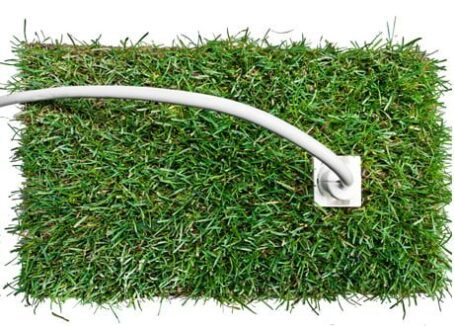China, Brazil and South Africa show wide diversity of clean energy investment opportunities
London, Washington D.C., 28 October 2014 – Developing nations represent a large and rapidly growing share of the world’s clean energy investment, according to Climatescope 2014, a landmark study released today. The results suggest renewable technologies can be just as cost-competitive in emerging parts of the world as they are in richer nations.
Climatescope, a country-by-country assessment, interactive report and index, offers the clearest picture yet of clean energy in 55 emerging markets in Africa, Asia and Latin America and the Caribbean. The findings show clean energy capacity added in these nations grew at a faster pace than in developed countries, more than doubling in the past five years and totalling 142 GW (more than France’s current capacity).
Climatescope’s key findings include:
- THE TOP TEN: China, Brazil, South Africa, India, Chile, Uruguay, Kenya, Mexico, Indonesia, Uganda
- China ranks #1, but Brazil is close behind at #2: China received the highest ranking as the largest manufacturer of wind and solar equipment in the world and the largest demand market for said equipment.
- South Africa, Kenya and Uganda were among the top scorers: All have significant clean energy projects and programs; South Africa has surged ahead with nearly $10bn of clean energy investment undertaken in the last two years.
- Latin American and Caribbean nations were buoyed by Brazil, but also relative newcomer Uruguay: While Brazil still dominates, Latin America and the Caribbean as a whole is emerging as a destination for clean energy investment.
- Small-scale renewables offer the most efficient way to provide energy access to vast numbers of people living without power. Tanzania has the most advanced regulation to encourage these types of projects, with a host of small power projects in the pipeline.
- Demand for clean energy is growing faster on a percentage basis in these countries than in more developed nations. From 2008-2013, Climatescope nations added 142 GW (a bit more than the current total installed capacity of France) of new, non-large hydro renewables capacity. That represented a 143% growth rate. By comparison, wealthier OECD nations added 213GW, posting a clean energy capacity growth rate of 84%.
- Climatescope shows that countries are rapidly strengthening their policy frameworks: Stronger policies attract more clean energy investment.
The Multilateral Investment Fund (MIF) of the Inter-American Development Bank Group (IDB), the UK Government Department for International Development (DFID), and the US Agency for International Development (USAID), under President Barack Obama’s “Power Africa” initiative, commissioned Bloomberg New Energy Finance (BNEF) to analyze and rank development prospects for solar, wind, small hydro, geothermal, biomass, and other zero-carbon emitting technologies (excluding large hydro) This report provides potential investors with important information identifying countries with the greatest clean energy investment opportunities.
Climatescope was developed in 2012 by the MIF/IDB and BNEF, and initially evaluated 26 countries in Latin America and the Caribbean. This year’s expanded project includes 19 countries in Africa, 10 in Asia, as well as 15 provinces in China and 10 states in India thanks to additional support from DFID and USAID.
“The Inter-American Development Bank is pleased to see DFID and USAID join the Climatescope project to identify key drivers and markets for clean energy investment globally,” says Luis Alberto Moreno, President of the Inter-American Development Bank. “This marks the third year of the Climatescope project, which aims not only to be a snapshot of where clean energy policy and finance stand today, but more importantly, serves as a guide to where clean energy opportunities can lie tomorrow.”
A country’s ranking depends upon various factors: its clean energy investment policy, its market conditions, the structure of its power sector; the number and makeup of local companies operating in clean energy; and efforts toward reduction of greenhouse gas emissions. The final output is the most comprehensive, one-stop source for decision makers to learn more about the market conditions for clean energy in these regions.
“Private sector investment is vital if developing countries are to improve their renewable energy provision and underpin economic growth,” said the Rt Hon Justine Greening. “Climatescope boosts the investment potential of this market by giving investors the information they need to make reliable funding decisions, thereby helping millions of people to access modern forms of energy and improve their quality of life. The UK’s support has enabled Climatescope to expand benefitting countries in Africa and Asia.”
All of the research is easily accessed at global-climatescope.org, which includes an interactive tool for users to pinpoint specific information, from the most granular country details to specific sector analysis. The website also allows for complete downloads of the Climatescope data in Excel format.
“Climatescope is a critical resource for the Power Africa initiative and our partners, providing an in-depth and objective evaluation of low-carbon energy opportunities in emerging markets, including Africa,” said U.S. Agency for International Development Administrator Dr. Rajiv Shah. “With over $20 billion in project financing commitments from our private sector partners, Power Africa aims to add 30,000 megawatts of cleaner, more efficient electricity generation capacity throughout sub-Saharan Africa.
Climatescope’s evaluation of the rapid growth of supply and demand for clean energy in Africa reinforces an important reality; Power Africa’s goal to expand energy access across the continent can and should be met in large part through clean energy development, whether at the utility scale or beyond the grid. “
For more information go to: global-climatescope.org or email: climatescope@bloomberg.net
ABOUT UK GOVERNMENT DEPARTMENT FOR INTERNATIONAL DEVELOPMENT (DFID)
The Department for International Development (DFID) leads the UK government’s work to end extreme poverty. A ministerial Department, its overall aim is to reduce poverty in poorer countries, in particular through achieving the Millennium Development Goals (MDGs). DFID works directly in 28 priority countries across Africa, Asia and the Middle East:, and has regional programmes in Africa, Asia, the Middle East and North Africa, and the Caribbean, as well as development relationships with 3 Overseas Territories – St Helena, the Pitcairn Islands and Montserrat. www.dfid.gov.uk
ABOUT POWER AFRICA
President Obama’s Power Africa initiative works with African governments, the private sector, and other partners such as the World Bank and African Development Bank to add more than 30,000 megawatts of cleaner, more efficient electricity generation capacity in sub-Saharan Africa. By expanding mini-grid and off-grid solutions and building out power generation, transmission, and distribution structures, Power Africa will also increase electricity access by adding more than 60 million new household and business connections. The Power Africa model is part of President Obama’s new approach to development, which builds local capacity and supports innovative ways to make traditional assistance programs more effective and sustainable. The initiative represents the combined efforts of 12 U.S. Government agencies.
ABOUT THE MULTILATERAL INVESTMENT FUND
The Multilateral Investment Fund (MIF), a member of the Inter-American Development Bank (IDB) Group, is funded by 39 donors and supports private sector-led development benefitting low-income populations and the poor – their businesses, their farms, and their households. The aim is to give them the tools to boost their incomes: access to markets and the skills to compete in those markets, access to finance, and access to basic services, including green technology. A core MIF mission is to act as a development laboratory – experimenting, pioneering, and taking risks in order to build and support successful micro and SME business models. More information at www.fomin.org.
ABOUT BLOOMBERG NEW ENERGY FINANCE
Bloomberg New Energy Finance (BNEF) provides unique analysis, tools and data for decision makers driving change in the energy system. BNEF has 200 staff based in 14 offices around the world. BNEF’s sectoral products provide financial, economic and policy analysis, as well as news and the world’s most comprehensive database of assets, investments, companies and equipment in the clean energy space. BNEF’s regional products provide a comprehensive view on the transformation of the energy system by region. For more information on Bloomberg New Energy Finance: http://about.bnef.com, or contact us at sales.bnef@bloomberg.net for more information on our services.










